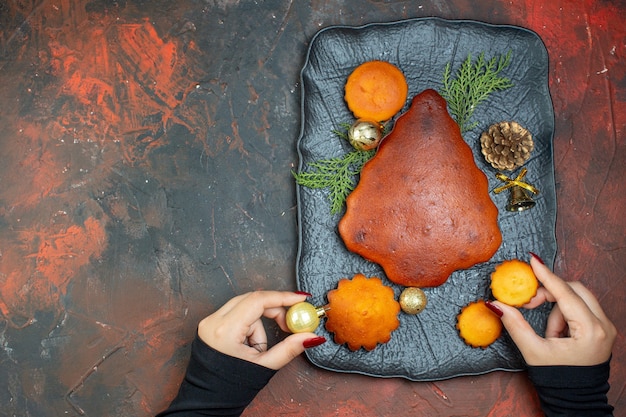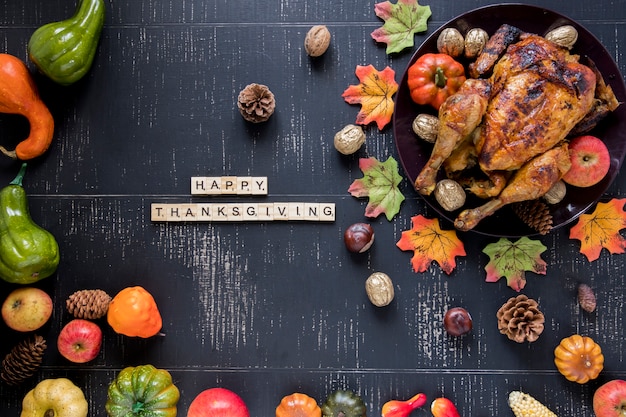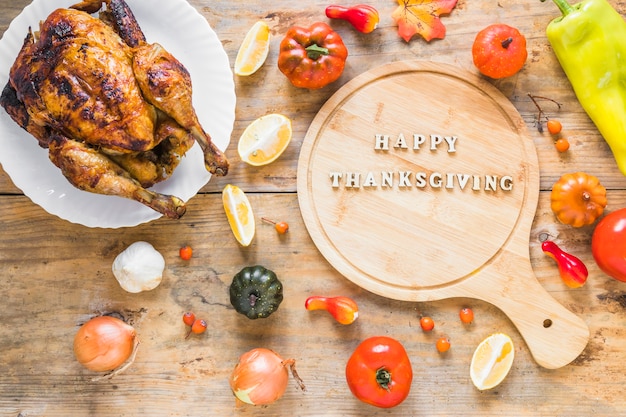Ah, Christmas! The twinkling lights, the carols, the family gatherings… and of course, the centerpiece of it all: the magnificent roast turkey. For many, the thought of cooking a 12 lb turkey can be a little daunting, but don't worry, I'm here to guide you through it. I've been tackling turkey roasts for years, and I've learned a thing or two along the way. We're going to dive deep into the whole process, from picking the perfect bird to carving it up like a pro, and everything in between. We'll talk about roasting times, temperatures, and all those little tips and tricks that make the difference between a dry, disappointing turkey and a truly magnificent feast.
Let's face it, the success of a Christmas dinner rests heavily on that juicy, golden-brown turkey. And let's not forget about the stuffing and gravy! They're the real sidekicks, the ones that make the whole meal sing. I'll share my favourite recipes for those, too. So, grab your favourite mug, brew yourself a cuppa, and settle in for a culinary adventure. We're about to make some Christmas magic happen!
(Part 1) Getting Started: Prep and Planning

First things first, before you even think about firing up the oven, you need to pick your star player: the turkey! Choosing the right bird sets the stage for a delicious roast.
The Right Bird for the Right Feast
You want a turkey that's both beautiful and tasty, and let me tell you, size matters! For a family of 6-8 people, a 12 lb bird is the perfect size. Now, when I say perfect, I don't mean just any old turkey. Go for free-range, if you can. Free-range turkeys have a bit more flavour, and they've lived a happier life. And when you're at the butcher's, give the turkey a good look over. It should feel firm and plump, with no squishy spots or any odd smells. We want a healthy bird, ready to shine on our table.
The Secret Weapon: Brining
Now, here's where things get really interesting. I'm a big believer in brining. It's the secret weapon for a truly moist and juicy turkey. Brining is essentially soaking the turkey in a salty water solution overnight. This not only keeps the turkey moist but also adds a whole new level of flavour. It's incredibly easy to do. You can find loads of brine recipes online. Just mix up a solution, find a large container big enough to hold the turkey, submerge it completely, and then pop it in the fridge for 8-12 hours.
Let me tell you, the difference brining makes is astonishing. It's like magic! The turkey just seems to melt in your mouth. But hey, if you're short on time, don't worry. Brining isn't essential, but it's definitely worth the extra effort.
Prep Day: Getting Ready for the Roast
The day of the roast, get ready for a little turkey pampering. Give your beautiful bird a good wash, inside and out. Then, pat it dry with paper towels, and it's time for the stuffing! Now, you can buy stuffing, of course, but I'm a firm believer in homemade. It's much tastier and lets you add your own personal touch. My favourite is a classic breadcrumb stuffing with herbs and sausage - it's a real crowd-pleaser.
Once you've stuffed your turkey, you'll need to tie the legs together. This helps to keep the bird from drying out during roasting and ensures even cooking. You can use string, but I recommend kitchen twine. It's more secure, and you can easily remove it after cooking.
Finally, give your turkey a luxurious rub with a generous amount of butter. Then, season it generously with salt and pepper. Don't be shy! We want that crispy skin and a flavour explosion. Now, your turkey is ready for the big event!
(Part 2) Roasting Time: The Key to Success

Okay, we've prepped our turkey, now it's time to unleash the magic of the oven. The trick to a perfect roast is slow and steady. We're going to cook our turkey at a low temperature for a long time, ensuring it cooks evenly and stays unbelievably juicy.
The Perfect Oven Temperature
Start by preheating your oven to 325°F (165°C). We want a hot oven, but don't worry, we'll be reducing the temperature soon.
The Turkey's Bed: A roasting pan
You'll need a roasting pan that's big enough for your turkey to stretch out comfortably. I always use a large, heavy-duty roasting pan with a rack. The rack lifts the turkey up, preventing it from sitting in its own juices and keeping the skin nice and crisp. And don't forget to add a little bit of water to the bottom of the pan. This will create steam, helping to keep the turkey moist. Don't worry, it won't make the turkey soggy.
Time to Roast
Now, gently place the turkey in the pan and roast it for about 3 hours. But hang on, don't just stick it in the oven and forget about it. We need to keep an eye on our turkey and keep it moist.
The Basting Ritual
Every hour, give your turkey a little pampering session by basting it with the pan juices. This helps to keep the skin moist and prevents it from drying out. You can use a spoon or a baster, but I find a pastry brush works best for spreading the juices evenly.
Rest Time: The Secret to Juiciness
After 3 hours, it's time to check if our turkey is ready. Use a meat thermometer to check the internal temperature. It should be 165°F (74°C) in the thickest part of the thigh. If it's not quite there yet, continue roasting for another 30 minutes or so. Once it's cooked through, take it out of the oven and let it rest for at least 30 minutes before carving. This allows the juices to redistribute, guaranteeing a juicy and flavorful turkey.
(Part 3) The Great Reveal: Carving the Turkey

Ok, the turkey is resting, the anticipation is building, and your mouth is probably watering. It's time for the grand unveiling: carving the turkey! Don't let this part intimidate you. It's actually quite simple with the right tools and technique.
The Carving Crew
You'll need a sharp carving knife and a carving fork. I love using a long, thin carving knife with a slightly curved blade. It cuts through the turkey cleanly without tearing the meat. The carving fork is for holding the turkey steady while you carve. And of course, don't forget a cutting board and a few serving plates or dishes to hold all that delicious turkey.
The Carving Technique: A Step-by-Step Guide
First, remove the wings from the turkey. Use your carving knife to cut through the joint. Next, you'll want to remove the legs. Carefully cut through the skin and flesh connecting the leg to the body. Then, use the carving fork to hold the leg steady while you remove it. Cut the leg at the joint and place it on a plate. Repeat this process for the other leg.
Now, it's time to carve the breast meat. Using the carving fork, hold the breast steady and start at the thicker end of the breast. Carefully slice through the meat, and then use the carving fork to lift the slices off the bone. Place the slices on a serving platter or individual plates. Repeat this for the other breast.
And there you have it, your turkey is carved and ready to be served. You did it! You've just conquered the turkey.
(Part 4) The Sides That Shine: Stuffing and Gravy
No turkey roast is complete without its delicious sidekicks: stuffing and gravy. These are the stars that make the feast truly memorable. And while there are endless variations, I'm going to share my favourite recipes with you. So, get ready to create some culinary magic!
Stuffing: A Classic Breadcrumb Delight
My stuffing is a classic breadcrumb stuffing with herbs and sausage. It's a comforting, savoury delight that pairs perfectly with the turkey. Here's what you'll need:
- 1 large loaf of bread, cubed
- 1 onion, chopped
- 2 cloves of garlic, minced
- 1 lb sausage meat
- 1/2 cup fresh parsley, chopped
- 1/4 cup fresh thyme, chopped
- 1/2 teaspoon sage
- 1/4 cup chicken broth
- Salt and pepper to taste
Here's how to make it:
- Preheat your oven to 350°F (175°C).
- In a large skillet, brown the sausage meat over medium heat. Drain any excess fat.
- Add the onion and garlic to the skillet and cook until softened, about 5 minutes.
- In a large bowl, combine the bread cubes, herbs, and sausage mixture. Pour in the chicken broth and mix everything well. Season with salt and pepper to taste.
- Transfer the stuffing to a greased baking dish and bake for 30 minutes, or until golden brown.
This stuffing is perfect for filling the turkey or serving on the side. It's a real crowd-pleaser.
Gravy: The Finishing Touch
Gravy is the ultimate finishing touch, the rich, savoury sauce that pulls the whole meal together. I make my gravy from the pan juices, capturing all those delicious turkey flavours. It's a simple recipe, but there are a few tricks to getting it just right. Here's what you'll need:
- 1 tablespoon butter
- 2 tablespoons all-purpose flour
- 2 cups turkey pan juices
- Salt and pepper to taste
Here's how to make it:
- In a medium saucepan, melt the butter over medium heat.
- Whisk in the flour and cook for 1 minute, or until the mixture is smooth.
- Gradually whisk in the turkey pan juices. Bring the mixture to a boil, then reduce the heat and simmer for 5 minutes, or until the gravy has thickened.
- Season with salt and pepper to taste.
Serve the gravy hot over the turkey, stuffing, or mashed potatoes. It's the perfect way to enhance every bite.
(Part 5) Leftovers: A New Beginning
You've cooked a magnificent turkey, enjoyed a delicious meal, and now you've got leftovers. But don't think of them as just leftovers! They're an opportunity for new culinary creations! Here are a few ideas for using up those leftover turkey treasures.
turkey sandwiches: A Classic Comfort
The classic use for leftover turkey is in sandwiches. You can make simple turkey sandwiches with bread, lettuce, and tomato, or get creative with your fillings. I love making turkey sandwiches with cranberry sauce, brie, and arugula. They're a delicious and satisfying lunch or snack.
turkey soup: A Warm and Hearty Delight
Another fantastic way to use leftover turkey is to make a comforting soup. You can make a simple turkey noodle soup, or let your creativity flow with different ingredients. I love making a turkey soup with carrots, celery, potatoes, and peas. It's a hearty and comforting meal on a cold day.
turkey salad: A Light and Refreshing Option
If you're looking for a lighter option, try turkey salad. Mix leftover turkey with mayonnaise, celery, and onion. You can also add cranberries, walnuts, or other ingredients to taste. Turkey salad is delicious on crackers, bread, or lettuce leaves.
turkey pot pie: A Hearty and Savoury Treat
If you're feeling ambitious, try making a turkey pot pie. Mix leftover turkey with gravy, vegetables, and a puff pastry crust. It's a delicious and satisfying meal that's perfect for a family dinner.
(Part 6) Tips and Tricks: Expert Advice
Here are a few more tips and tricks to help you achieve turkey perfection:
Don't Overstuff
Be careful not to overstuff the turkey. Too much stuffing can make it difficult to cook evenly. I usually fill the turkey about 3/4 full. You can always cook the remaining stuffing separately in a baking dish.
Keep a Close Eye on the Oven Temperature
It's important to monitor the oven temperature and make sure it stays consistent throughout the cooking process. If the temperature fluctuates too much, it can affect the cooking time and the final outcome of the turkey. You can use an oven thermometer to check the temperature.
The Importance of a Meat Thermometer
A meat thermometer is essential for checking the internal temperature of the turkey. This ensures that it's cooked through and safe to eat. The turkey is cooked through when the internal temperature reaches 165°F (74°C) in the thickest part of the thigh.
Don't Be Afraid to Ask for Help
If you're feeling overwhelmed, don't be afraid to ask for help. There are plenty of resources available, including online cooking videos, cookbooks, and even friends and family who can offer advice. cooking a turkey is a team effort, and it's always good to have a support system in place.
(Part 7) Table Setting: The Art of the Feast
You've cooked the perfect turkey, made delicious sides, and now it's time to set the table. The table setting can make or break the occasion. Here's how to create a festive and inviting table setting for your Christmas feast:
The Centerpiece: The Eye Catcher
A centerpiece is a great way to add a touch of elegance and festive cheer to your table. You can use a vase filled with fresh flowers, a bowl of fruit, or a decorative arrangement of candles. The choice is yours, but make sure it complements your chosen table decor.
Dinnerware and Cutlery: A Coordinated Ensemble
For a formal dinner, use your finest china and silverware. If you're going for a more casual look, you can use everyday dishes and silverware. Just make sure everything is clean and polished.
Linens: The Foundation of Elegance
A table cloth is a great way to add a touch of elegance to your table. You can use a traditional white table cloth, or opt for a festive colour like red or green. If you're going for a more casual look, you can use placemats instead.
Place Cards: A Personal Touch
Place cards are a great way to add a personal touch to your table setting. Write each guest's name on a card and place it in front of their plate. You can also add a festive message or quote to each card.
Table Decor: Adding Festive Flair
Use candles, ornaments, or other festive decorations to add a touch of Christmas cheer to your table setting. Just make sure the decorations aren't too overwhelming and don't obstruct guests' views of each other.
(Part 8) FAQs: Answers to Your Turkey Questions
What if my turkey is too big?
If your turkey is too big for your roasting pan, you can roast it in two parts. Roast the legs and thighs separately for about 3 hours, and then roast the breasts for about 1.5 hours. Make sure to check the internal temperature of both parts with a meat thermometer.
What if my turkey is too small?
If your turkey is too small, you can roast it for a shorter amount of time. Just reduce the roasting time by about 15-20 minutes per pound. Again, make sure to check the internal temperature with a meat thermometer.
What if my turkey is dry?
If your turkey is dry, you can try to add moisture by basting it more frequently. You can also add a little bit of broth or water to the roasting pan during cooking. Finally, let the turkey rest for at least 30 minutes before carving. This will allow the juices to redistribute and make the turkey more moist.
What if my turkey is overcooked?
If your turkey is overcooked, it's unlikely you'll be able to salvage it. But you can try to make it more palatable by serving it with a rich gravy and moist sides.
What if my turkey is undercooked?
If your turkey is undercooked, you'll need to cook it for longer. Return the turkey to the oven and cook it for another 30 minutes, or until the internal temperature reaches 165°F (74°C) in the thickest part of the thigh. You can check the temperature with a meat thermometer.
I hope you've enjoyed this guide to roasting a 12 lb turkey. Remember, the key to a perfect roast is patience, a bit of planning, and a whole lot of love! Happy cooking, and have a delicious Christmas feast!
Everyone is watching

Corn on the Cob: The Ultimate Guide to Perfectly Cooked Ears
Healthy MealsAh, corn on the cob. Just the name evokes images of sunny days, barbecues, and that sweet, juicy flavour that ...

Perfect Pork Roast Oven Cooking Time: A Guide to Delicious Results
Healthy MealsThere's something truly satisfying about a perfectly roasted pork. The aroma alone is enough to make your mout...

Ham Cooking Time: How Long to Bake, Smoke, or Boil a Delicious Ham
Healthy MealsAh, ham. It's a classic, isn't it? A real crowd-pleaser, especially around holidays. And when done right, it'...

Scallops: The Ultimate Guide to Perfect Cooking
Healthy MealsAh, scallops. Those delicate, sweet, and utterly delicious morsels of the sea. They hold a special place in my...

Spaghetti Squash: The Ultimate Guide to Cooking and Serving
Healthy MealsRemember that time you saw spaghetti squash at the supermarket, looking all bumpy and strange, and thought, "W...
